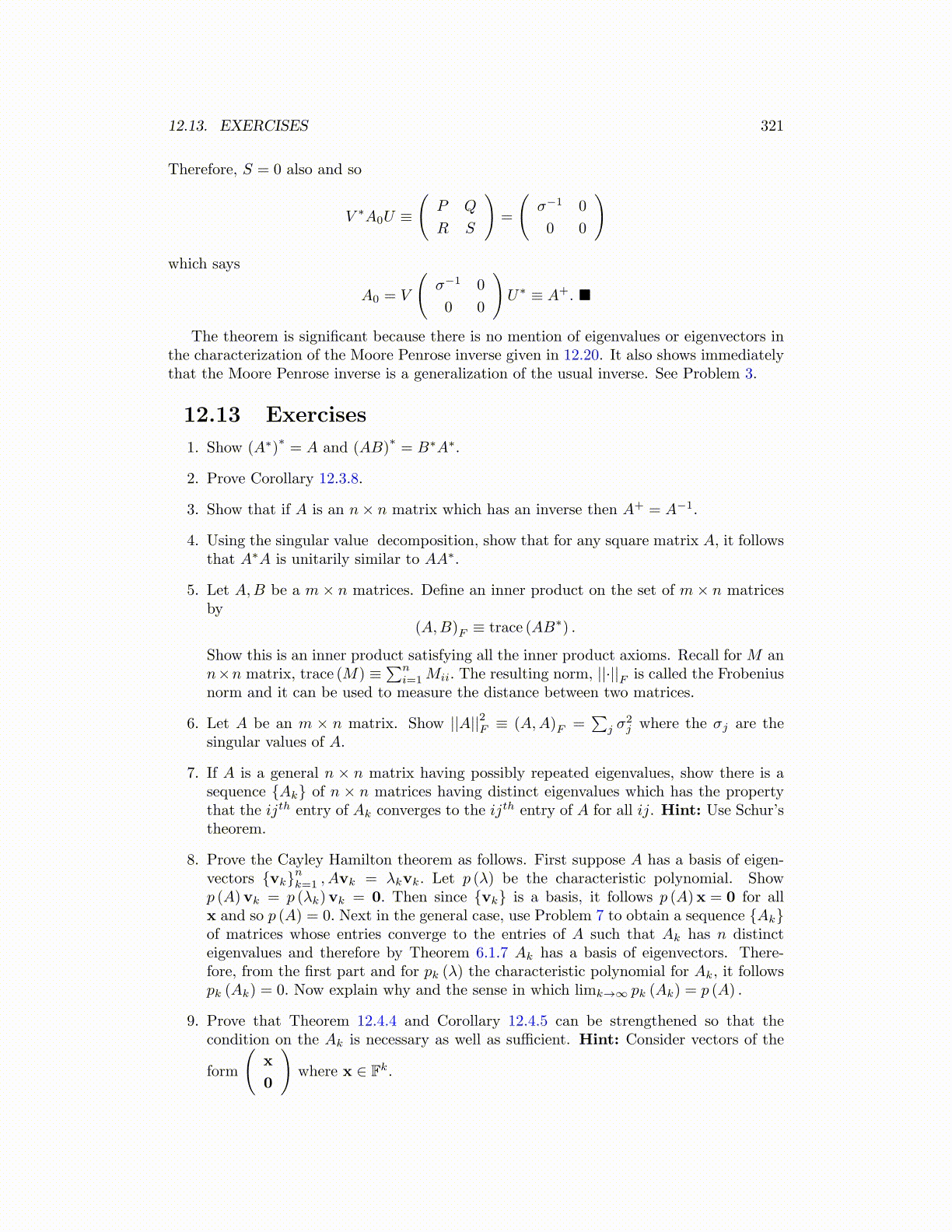
12.13. EXERCISES 321
Therefore, S = 0 also and so
V ∗A0U ≡
(P Q
R S
)=
(σ−1 0
0 0
)
which says
A0 = V
(σ−1 0
0 0
)U∗ ≡ A+. ■
The theorem is significant because there is no mention of eigenvalues or eigenvectors inthe characterization of the Moore Penrose inverse given in 12.20. It also shows immediatelythat the Moore Penrose inverse is a generalization of the usual inverse. See Problem 3.
12.13 Exercises
1. Show (A∗)∗= A and (AB)
∗= B∗A∗.
2. Prove Corollary 12.3.8.
3. Show that if A is an n× n matrix which has an inverse then A+ = A−1.
4. Using the singular value decomposition, show that for any square matrix A, it followsthat A∗A is unitarily similar to AA∗.
5. Let A,B be a m× n matrices. Define an inner product on the set of m× n matricesby
(A,B)F ≡ trace (AB∗) .
Show this is an inner product satisfying all the inner product axioms. Recall forM ann×n matrix, trace (M) ≡
∑ni=1Mii. The resulting norm, ||·||F is called the Frobenius
norm and it can be used to measure the distance between two matrices.
6. Let A be an m × n matrix. Show ||A||2F ≡ (A,A)F =∑
j σ2j where the σj are the
singular values of A.
7. If A is a general n × n matrix having possibly repeated eigenvalues, show there is asequence {Ak} of n × n matrices having distinct eigenvalues which has the propertythat the ijth entry of Ak converges to the ijth entry of A for all ij. Hint: Use Schur’stheorem.
8. Prove the Cayley Hamilton theorem as follows. First suppose A has a basis of eigen-vectors {vk}nk=1 , Avk = λkvk. Let p (λ) be the characteristic polynomial. Showp (A)vk = p (λk)vk = 0. Then since {vk} is a basis, it follows p (A)x = 0 for allx and so p (A) = 0. Next in the general case, use Problem 7 to obtain a sequence {Ak}of matrices whose entries converge to the entries of A such that Ak has n distincteigenvalues and therefore by Theorem 6.1.7 Ak has a basis of eigenvectors. There-fore, from the first part and for pk (λ) the characteristic polynomial for Ak, it followspk (Ak) = 0. Now explain why and the sense in which limk→∞ pk (Ak) = p (A) .
9. Prove that Theorem 12.4.4 and Corollary 12.4.5 can be strengthened so that thecondition on the Ak is necessary as well as sufficient. Hint: Consider vectors of the
form
(x
0
)where x ∈ Fk.